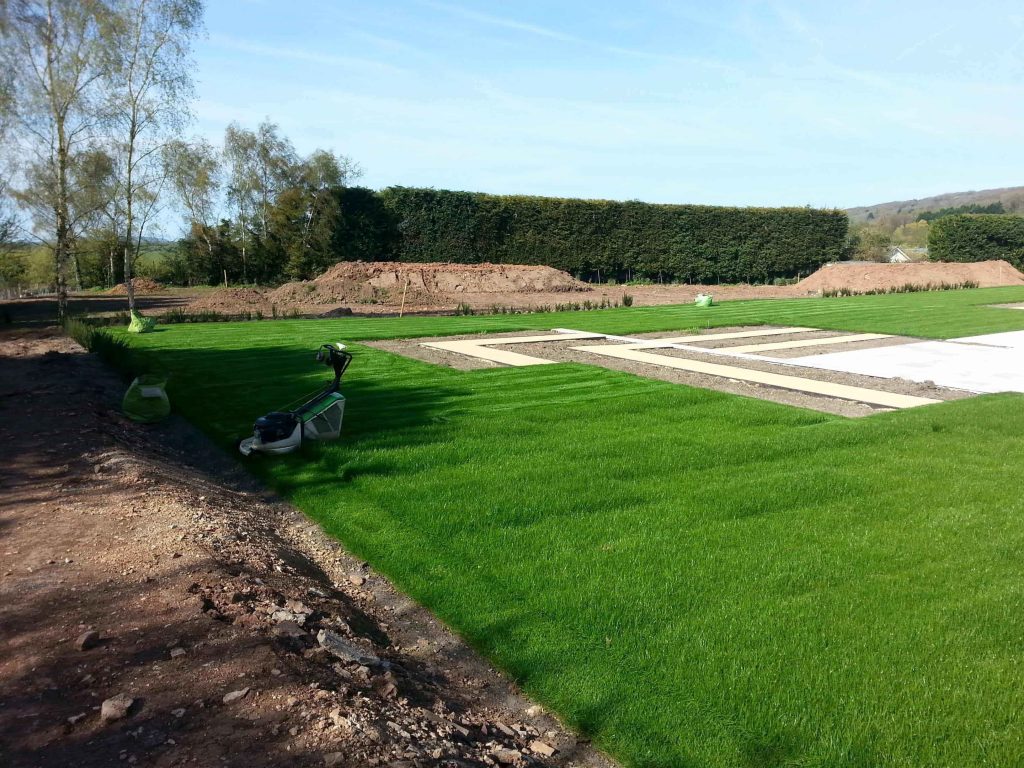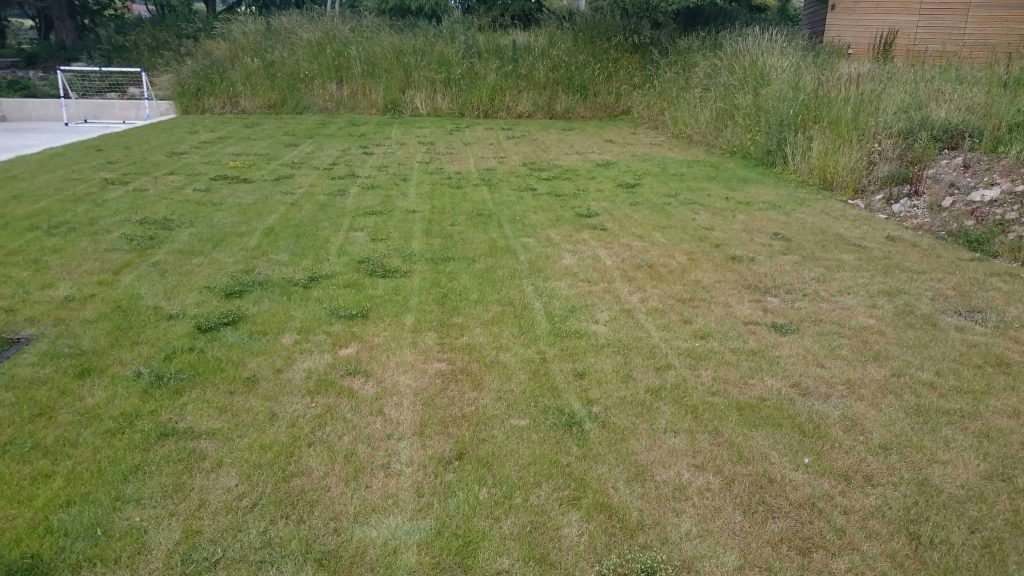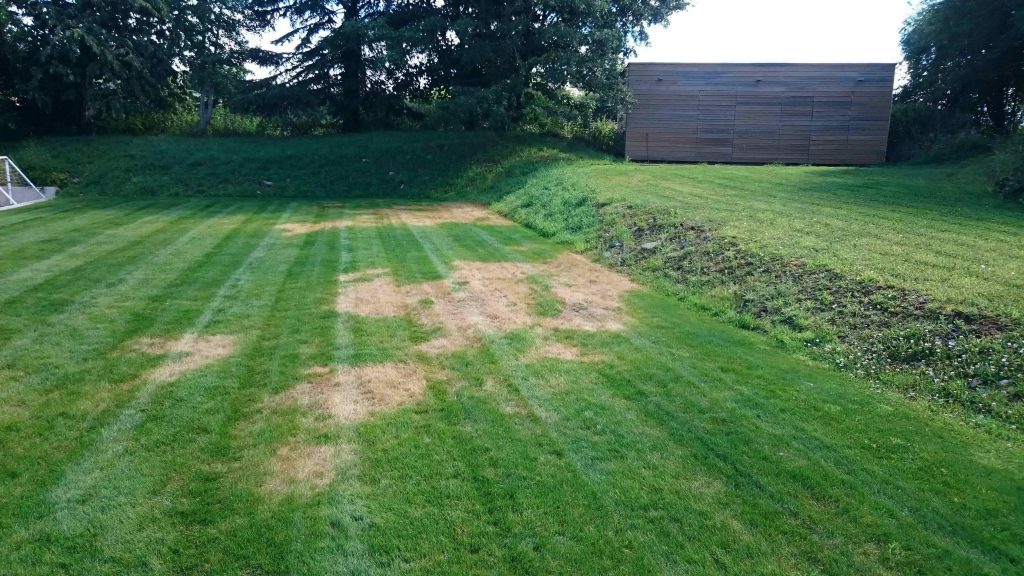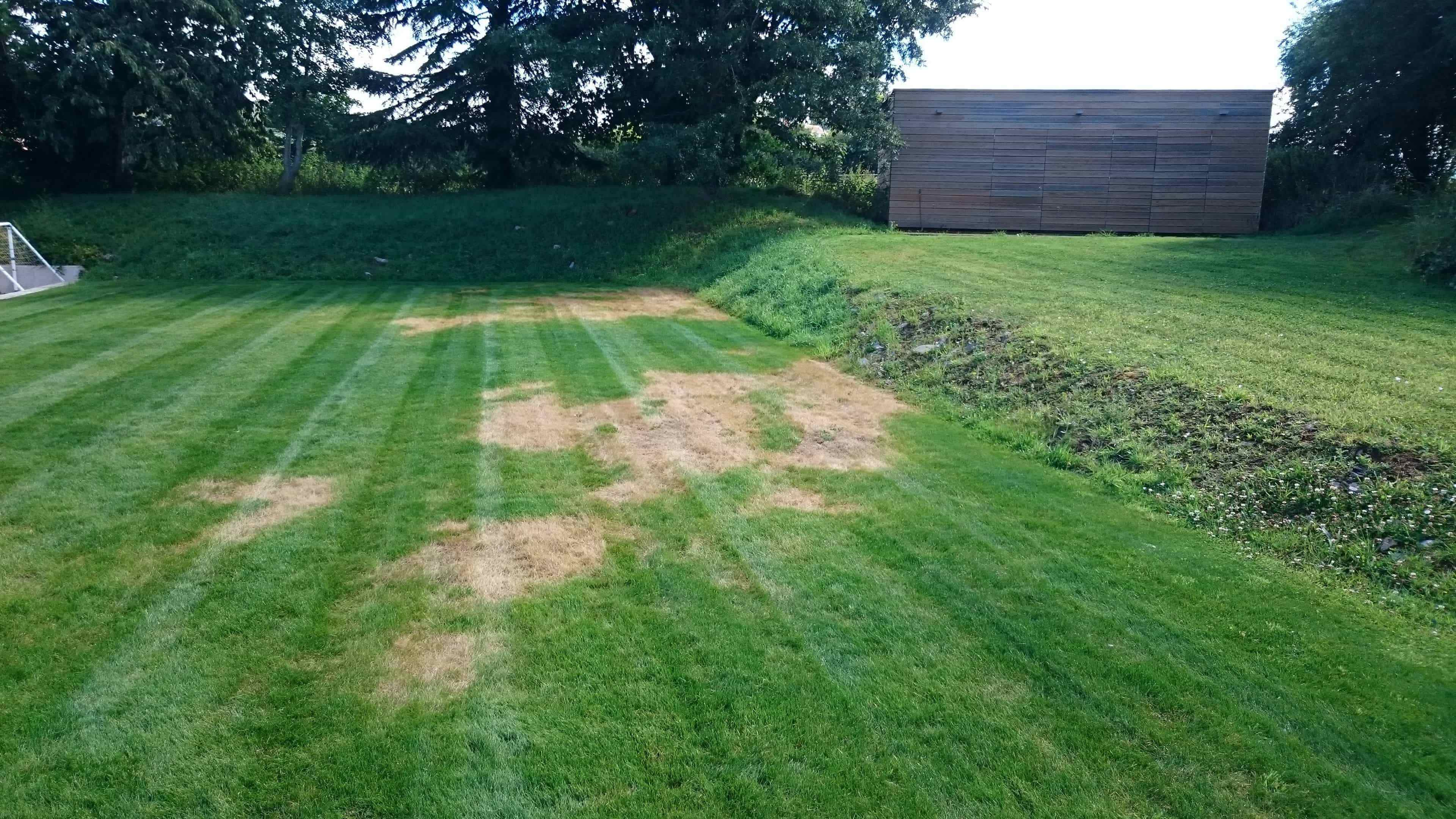Or, the importance of good preparation.
I could write a detailed research paper on the history of this new build lawn. The pitfalls of establishment and process of recovery. When to give up and start again or persist with getting it healthy and long term sustainable.
The landscape gardeners who put the lawn down were justifiably pleased with its initial appearance – a fine quality turf on a new-build site. The problem was/is turf laid on a compacted sub-soil of clay, rubble and boulder with a thin layer of compost (or soil with a high organic component). There is always an element of this on new build sites but the depth of good top-soil is always the key to long term health and ease of maintenance.

Here, unfortunately the preparation wasn’t good enough for the long term. One year later, the same lawn:

The highly fertile thin layer of compost on which the turf was laid had resulted in ridiculously vigorous growth in its first year. It was already a foot high when we were first called back in to take on the regular lawn and garden maintenance. For that first summer (2014) we were having to cut the lawn twice a week just to keep it manageable. Inevitably by the following year, the new turf had exhausted its high nitrogen reserves and the roots had met an impenetrable layer of rubble below its thin, now exhausted, compost base. The analogy of trying to run a marathon on sugar and caffeine is probably a good one.
The organic base had shrunk, exposing, in some areas, large boulders just below the turf surface.
However maybe 60% of the lawn had a decent enough soil profile to work with so we decided to work with what we had and carried on routine lawn treatments:
- Feed
- Focusing on rootzone establishment with autumn balanced NPK feed
- Organic, balanced summer feed. The lawn had exhausted itself with an over-supply of nitrogen so we focused on slow release, balance growing season feed (NPK of 2:1:1)
- Weed
- The thin, exhausted turf has let a lot of weed seeds in, so reluctantly we sprayed off the trefoils, medicks, dandelions &c. It was noticeable how many legumes were flourishing suggesting that nitrogen availability had become an issue.
Not to put all the blame on preparation, I had been reluctant to feed the lawn owing to its earlier over-stimulation but in retrospect I should have still been keeping its nutrient levels balanced rather than letting it get too run down.
- Top-dress
- A slow, long term approach but building up a deep healthy soil profile is the long term key.
- Overseed
- Choice of grass species/cultivar. Some of the fescues are good for lawn recovery and coping with drought prone low nutrient habitats.
This summer (June 2017)

Three years in and we are still struggling with patches. You can actually trace the paler areas in the earlier photo from 2015. The main one has a large boulder underneath a few inches of soil. Time to bite the bullet and dig that area over I think.
With good condtions (rain) the lawn generally looks fine (still a seasonal bloom of weed species in the thinnish turf but the need for herbicide is thankfully becoming less as it thickens up). However when condtions are more stressful (periods of low rainfall and high temperatures) the weakness in the lawn is shown up – it is not resilient to stress. Always a nice bit of red thread fungus hanging around doesn’t help.
Overall – progress, but still wondering at times whether to rip it up and prepare the ground properly. This is why I roll my eyes when people say give me a low maintenance garden, why not whack a bit of turf down.

Leave a Reply